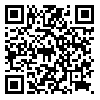BibTeX | RIS | EndNote | Medlars | ProCite | Reference Manager | RefWorks
Send citation to:
URL: http://jdisabilstud.org/article-1-2266-en.html
2- Associate Professor, Department of Counseling, Faculty of Education and Psychology Sciences, Alzahra University, Tehran, Iran
Abstract
Background & Objective: Pregnancy plays a decisive role in the characteristics of the postpartum period. During pregnancy, mothers are concerned about many issues, such as fetal health, childbirth difficulties, fitness, efficient infant care, and likely changes in interpersonal, social, and occupational relationships. These concerns can have long–term effects on personality traits, temperament, and psychological abilities. This study investigated the relationship between these concerns during pregnancy and infants' temperament to help prevent postpartum problems.
Methods: This was an ex post facto research (causal–comparative) study, and the statistical population included pregnant women referring to three pregnancy care centers in Qom City, Iran, during 2016–2017. The sample included 57 volunteer mothers in the last trimester of pregnancy. An available sampling method was used in this study. The participants were studied from the previous three months of pregnancy to six months after the infant's birth. Firstly, mothers filled out the Prenatal Distress Questionnaire (PDQ) (Alderdice and Lynn, 2011), which examines various maternal concerns about labor and the baby, worries about weight, body image, emotions, and relationships. The samples completed this questionnaire during pregnancy. Based on their scores in the pregnancy concerns questionnaire, mothers were classified into two groups: normal and high levels of distressed mothers. After the birth of newborns from the third month, the newborns' temperament was evaluated using the Revised Infant Behavior Questionnaire (IBQ–R) (Rothbart & Gartstein, 2003), which measures three main factors of temperament: openness, negative affectivity, and regulation. Mothers filled out the forms, and the obtained data were analyzed by the Pearson correlation coefficient and regression methods in SPSS software. Also, p<0.05 was considered statistically significant.
Results: According to the research findings, a positive and significant correlation was observed between maternal pregnancy distress and the infant's temperament (r=0.41, p≤0.01). There was also a positive and significant correlation between maternal distress pregnancy and infant negative affectivity (r=0.41, p≤0.1). On the other hand, maternal concerns during pregnancy were not positively and significantly related to the happiness and adaptability /regulation of the infant.
Conclusion: The results of this study showed that high levels of distress in pregnant mothers are directly related to the negative affectivity of the baby, and these concerns during pregnancy can predict an infant's temperament. Therefore, it seems necessary for pregnant mothers to be aware of the factors that make them worry about fetal health and the individual and social consequences of having a positive and better interaction with their baby.
| Rights and permissions | |
 |
This work is licensed under a Creative Commons Attribution-NonCommercial 4.0 International License. |



